





Today it was warm in Northwest Missouri. The thermometer in my front yard read 65 degrees. And for January that is a wonderful gift. I took a break from the hustle and bustle of the day to walk through my gardens and remember them as they are during the warm season. I carried a notebook along so I could take notes as I roamed through the gardens.
 Normally January in Northwest Missouri is cold, drab and often frozen over with ice and snow. But today was special. We had a break from the misery of the cold. When my thermometer sings 65° F it's time to rush outside for some garden fun! I grabbed my notebook, pen and camera, stopped to say hello to the cat then rushed outside. I must admit, I did not rush once I got outdoors; it was more of a meander. But I did take advantage of the warm winter's day. I moseyed through my gardens with my faithful farm dog, Dixie Girl nipping at my heels. Dixie Girl was born in Florida. We refer to her as our Southern Belle.
Normally January in Northwest Missouri is cold, drab and often frozen over with ice and snow. But today was special. We had a break from the misery of the cold. When my thermometer sings 65° F it's time to rush outside for some garden fun! I grabbed my notebook, pen and camera, stopped to say hello to the cat then rushed outside. I must admit, I did not rush once I got outdoors; it was more of a meander. But I did take advantage of the warm winter's day. I moseyed through my gardens with my faithful farm dog, Dixie Girl nipping at my heels. Dixie Girl was born in Florida. We refer to her as our Southern Belle.
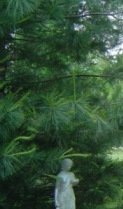
 The evergreens
The evergreens
Eastern white pine, Pinus strobus
Thuja, Thuga occidentalis 'Emerald Green' (Arborvitae)
Eastern red cedars, Juniperus virginiana
This is the time of year when I find it difficult to imagine the beauty of the summer garden. I dash past my windows so I do not have to see the over-abundance of brown and gray outside. There is some green in my yard in January; I have evergreens. An eastern white pine, Pinus strobus, and an arborvitae in the front yard grant me a spot of green on an otherwise toneless winter day. In my backyard I have an eastern white pine and several eastern red cedars, Juniperus virginiana. But those of us who are acquainted with the eastern red cedars know that they take on a tarnished rust-red hue in the winter. And unless berries are still clinging to their prickly limbs they really do not spice up the winter garden. I have two cedars that tend to keep their berries through the coldest of winters. One of them is plump and happy. It grows close to the house beneath the outdoor security light. It is near a large kitchen window. During snowstorms I always admire it. Late at night when the family is in bed I creep to my kitchen window and watch the snowflakes sparkle in the light as they drift from the sky and land on the cedar's waiting branches. The boughs reach up to grasp the snow and remind me of children's curious hands. The blue berries that dangle from the limbs seem more like tiny sapphires than actual berries. I would miss that tree if it died. I made a note as I walked by it to trim it. It had grown tall again. The cedar tree is too close to the security light, but I haven't the heart to cut it down. Eastern red cedars will grow up to fifty feet tall, so we trim it back and continue to enjoy its beauty.
Miss Kim Hedge in Winter Miss Kim lilac, Syringa patula 'Miss Kim' I walked through my backyard to the magnolia garden. Last summer I put in a curved hedge of Miss Kim lilacs, Syringa patula 'Miss Kim', to create a wall at the back of my magnolia garden. You can see the distinct curve in the line of the hedge in the photos above. It is a striking addition to my magnolia garden. In time the hedge will create a backdrop of lilac shrubs which will reach up to seven feet tall. And since 'Miss Kim' is hardy to -40°, I am confident they will do well. I am impatient for that day. I gaze at my lilac babies and imagine them full grown and blooming. A solid wall of lilac blooms must surely be heaven on earth! I noted with concern how my newly planted lilac shrubs have handled the cold temperatures thus far. They look great. Newly Planted Yew Densiformis yews, Taxus x media 'Densiformis' As the sun dipped low in the sky, I roamed to the front yard and onto the main drive into the farm. I built a tall lattice panel fence several seasons ago. My husband planted spreading yews, Taxus x media 'Densiformis', in front of it. They seemed sad to me after the harsh cold we suffered last week. But overall they have done well in the cold. They are hardy to -30° and their color will dull in the cold. But in the warm weather their lush green color returns. And they are a good border hedge for between the driveway and the house. Sunset on a Warm Winter's Day My husband accuses me of being list-crazy. I have yet to attend a session of list makers anonymous, if there is such an organization, but I confess I am addicted to my lists. As I toured my gardens today I made lists. I did not make one list, I made several lists. I now have three separate lists from my garden walk. I wrote lists for the spring chores, changes to be made and the suggested gardens lists. I numbered the spring chores I would need to complete. It was rather daunting when I tallied up all those chores to be done! I noted any changes I want to make in each flowerbed or garden area. Suggested new garden locations and new plants to try were also added to the lists. Finally I took particular notice of how my plants have tolerated the severe cold. I was glad to discover that all have done well. Cottage Garden in Winter Cottage Garden in Summer We have an often used expression here in Northwest Missouri. "If you don't like the weather, hang around it will change." Today was warm tomorrow will be different, I'm sure. But I am thankful to have been gifted with a warm day in January. The brown of winter seems less severe after today's gift. And my spring chore lists have been completed sooner than usual. My wintery mood has improved, and I feel invigorated by the fresh air. I find myself hoping for another warm winter's day, so I can meander through my gardens and imagine how they will soon look, again. Photo Credits Links (Editor's Note: This article was originally published on January 28, 2009. Your comments are welcome, but please be aware that authors of previously published articles may not be able to respond to your questions.) 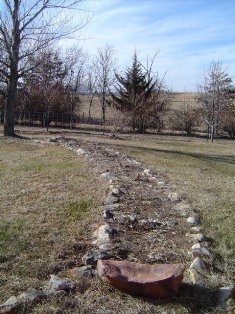
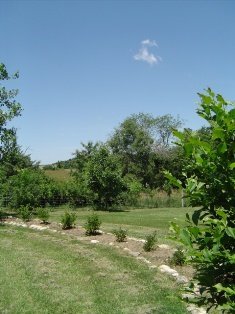
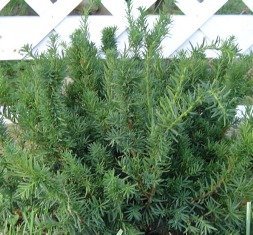

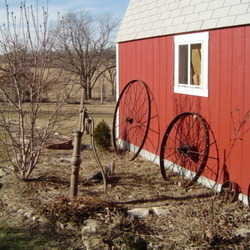
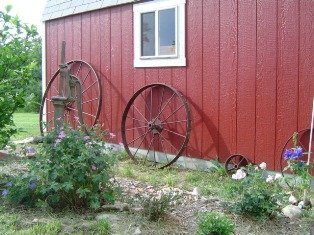
Photos are of the author's own gardens
Cottage Gardening forum at Dave's Garden (available to subscribing members)
Spreading yew, Taxus x media
Lilac, Syringa pubescens
Eastern red cedar, Juniperus virginiana
Arborvitae, Thuja occidentalis
Eastern white pine, Pinus strobus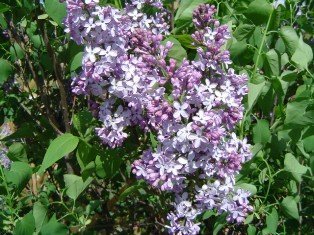 Pleasant gardening
Pleasant gardening
Copyright © www.100flowers.win Botanic Garden All Rights Reserved